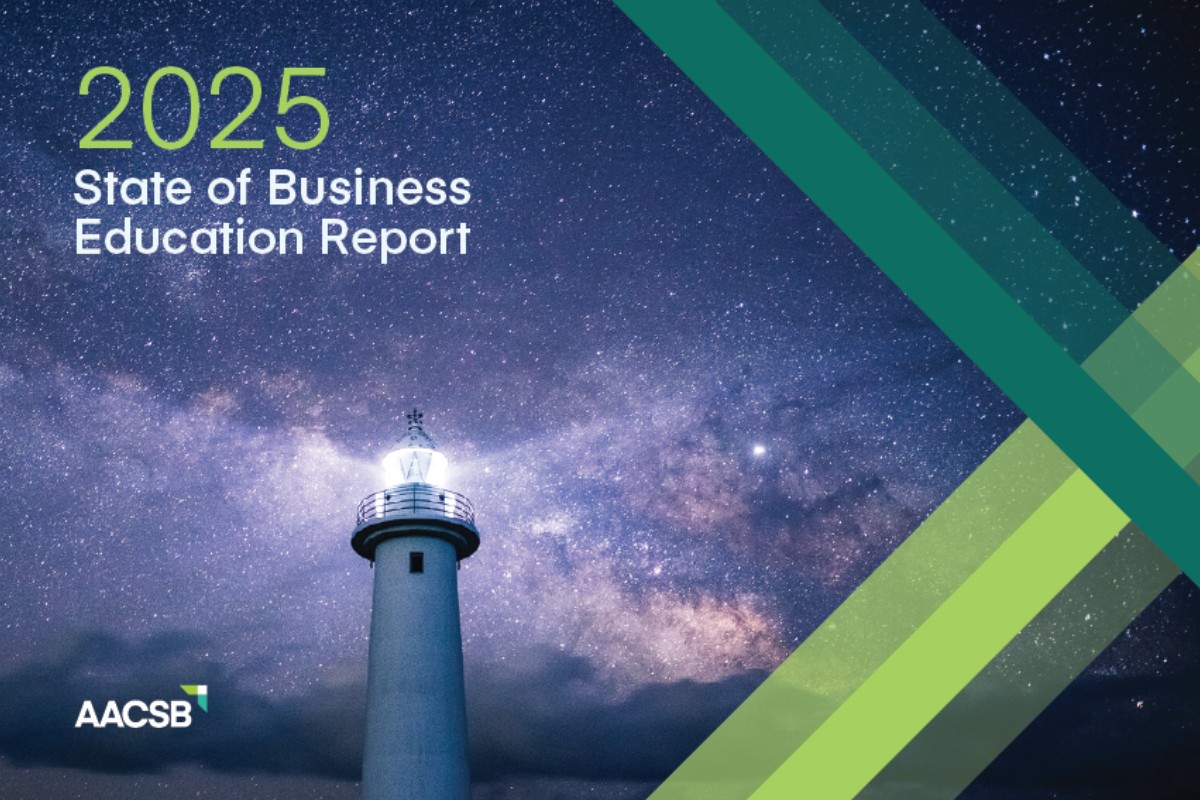Business Schools at a Crossroads: Inside the AACSB's Groundbreaking Education Transformation Report
Business
2025-04-07 08:00:00Content

2025 AACSB State of Business Education Report: Navigating the Future of Learning
AACSB International has unveiled its comprehensive 2025 State of Business Education Report, offering a deep dive into the transformative landscape of business education. This groundbreaking analysis provides critical insights into the dynamic shifts reshaping how business schools operate, learn, and prepare future leaders.
The report meticulously examines three pivotal dimensions of business education:
- Financial Sustainability: Exploring the economic challenges and innovative strategies business schools are adopting to ensure long-term viability
- Enrollment Dynamics: Analyzing emerging learner expectations and evolving educational preferences
- Leadership and Faculty Evolution: Investigating the increasingly complex roles and responsibilities of academic professionals
By highlighting these critical areas, the report serves as a strategic roadmap for educational institutions seeking to adapt and thrive in an rapidly changing academic ecosystem.
Released on April 7, 2025, in Tampa, Florida, this comprehensive study promises to be an essential resource for business education stakeholders worldwide.
Transforming Business Education: A Comprehensive Exploration of Future Learning Paradigms
In an era of unprecedented technological disruption and global economic transformation, business education stands at a critical crossroads. The landscape of professional learning is rapidly evolving, challenging traditional educational models and demanding innovative approaches that prepare future leaders for an increasingly complex and dynamic global marketplace.Navigating the Future: Breakthrough Insights into Business Education's Revolutionary Trajectory
Financial Sustainability in Academic Institutions
The financial ecosystem of business schools is experiencing profound metamorphosis. Traditional revenue streams are being challenged by emerging digital learning platforms, alternative credentialing systems, and shifting student expectations. Academic institutions must now develop agile financial strategies that balance operational costs with innovative educational delivery models. This requires a holistic approach that integrates technological infrastructure, curriculum design, and strategic resource allocation. Institutions are increasingly exploring hybrid funding mechanisms, including corporate partnerships, digital learning platforms, and flexible tuition models. The convergence of technology and education is creating unprecedented opportunities for financial reinvention, enabling schools to develop more sustainable and adaptable economic frameworks.Enrollment Dynamics and Learner Expectations
Contemporary students are no longer passive recipients of knowledge but active participants in their educational journey. The modern learner demands personalized, flexible, and technologically integrated learning experiences that directly translate to professional competencies. Business schools must reimagine their enrollment strategies to attract and retain a diverse, globally-oriented student population. Micro-credentials, stackable degrees, and industry-aligned curriculum are becoming critical differentiators. Students seek educational experiences that provide immediate practical value, bridging the gap between academic theory and real-world professional challenges. This shift necessitates a radical transformation in how educational institutions conceptualize and deliver learning experiences.Evolving Faculty and Leadership Roles
The traditional academic paradigm is being fundamentally restructured. Faculty members are no longer mere knowledge transmitters but must become dynamic facilitators of learning, technological integrators, and industry-connected mentors. Leadership in academic institutions requires a multidimensional skill set that combines pedagogical expertise, technological proficiency, and strategic vision. Emerging leadership models emphasize adaptability, cross-disciplinary collaboration, and a deep understanding of global economic trends. Academic leaders must cultivate environments that encourage innovation, critical thinking, and continuous learning. This involves developing robust professional development programs, fostering interdisciplinary research, and creating flexible organizational structures.Technological Integration and Digital Transformation
Digital technologies are fundamentally reshaping business education's core infrastructure. Artificial intelligence, machine learning, virtual reality, and advanced analytics are no longer peripheral technologies but central components of contemporary learning ecosystems. Business schools must invest in cutting-edge technological infrastructure that provides immersive, personalized, and data-driven educational experiences. The integration of emerging technologies extends beyond classroom tools, encompassing comprehensive digital strategies that prepare students for a technology-driven professional landscape. This requires continuous curriculum adaptation, faculty upskilling, and strategic technological investments that align with global industry trends.Global Perspective and Cultural Intelligence
Business education must transcend traditional geographical and cultural boundaries. The future of professional learning demands a truly global perspective that cultivates cultural intelligence, cross-border collaboration, and nuanced understanding of international business dynamics. Educational institutions must develop curricula that prepare students to navigate complex, interconnected global ecosystems. This involves creating international exchange programs, developing multicultural learning modules, and fostering partnerships with global organizations. The goal is to produce graduates who are not just technically proficient but also culturally adaptable and globally minded.RELATED NEWS








